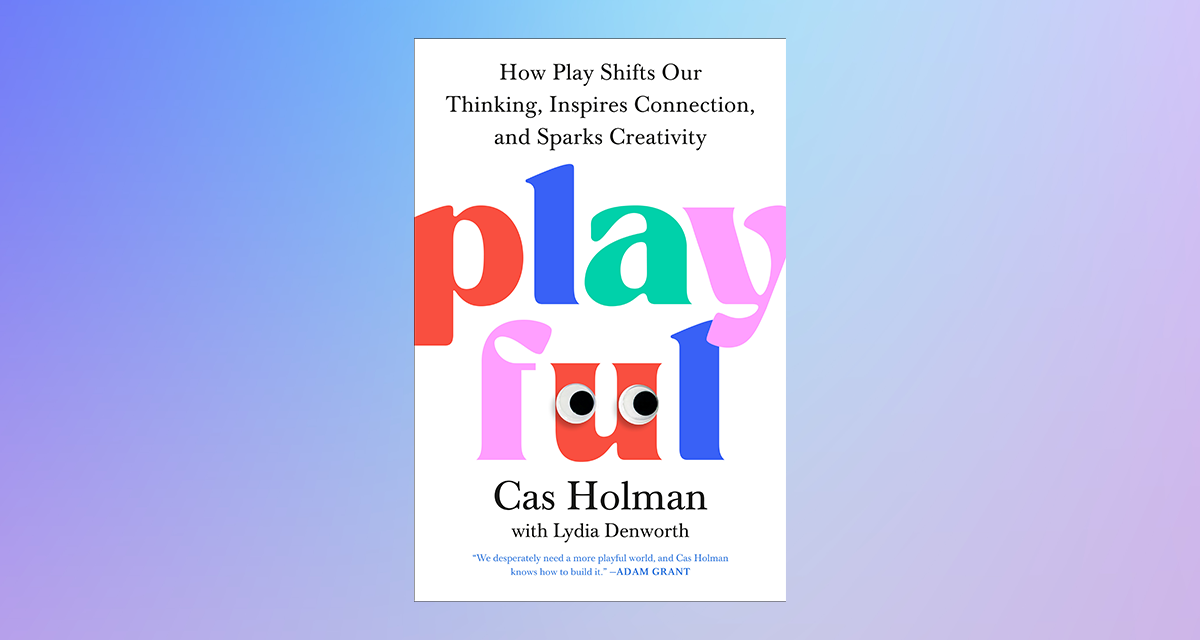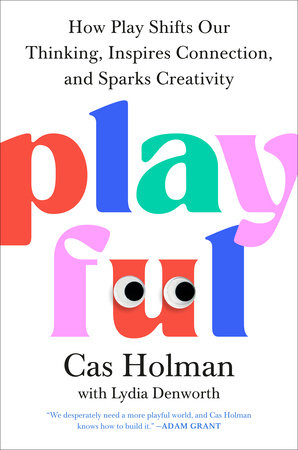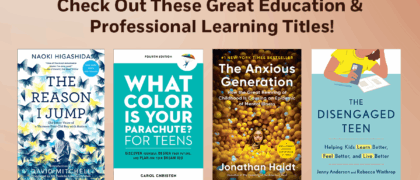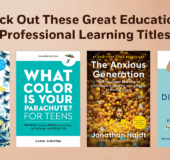We’re all born playful. But when we grow up, we learn to suppress this critical, hardwired instinct and our lives become ruled by “getting things done.” As world-famous designer Cas Holman explains, this disconnection from our playful selves is hazardous to everything from our emotional wellbeing to our ability to problem solve and innovate. The emerging science of play shows that it sparks joy, wonder, creativity, and insight at any age.
Here, Holman explains the power of “free play” through open-ended, unstructured activities that we become absorbed in with no obvious goal or purpose. The ways we can play are endless and what recharges us most is unique to each of us: whether it’s a piece of art we create, an entertaining conversation with a stranger, or an experiment to shake up a routine task.
Worksheet for Students for Playful by Cas Holman with Lydia Denworth
1. Writing Prompt: Play Memory (Step 1 of 4)
Recall a moment of play from your childhood and write a few paragraphs about the circumstances around the play. Include the environment, the materials used, and the other people present, if any. Consider what was happening in your household or life at that time. What made that type of play meaningful to you, so much so that you remember it today?
Discussion Prompt: Play Memory (Step 2 of 4)
In small groups, share your play memories and discuss which childhood play type each one exemplifies (see pages 9–10).
Discuss which of these memories would be considered free play, and work together to identify some examples of free play that you experienced as a child.
Writing Prompt: Playing While Adult (Step 3 of 4)
Now, go through the same process again but focus on how you play now. Write about an experience playing within the last year. Think about the circumstances around the play: the environment, the materials, the other people, etc.
Discussion Prompt: Playing While Adult (Step 4 of 4)
List a few of the ways you play as an adult and name the adult play types you would associate with each of them.
Discuss the following: Is a group discussion a type of play? Would you consider any of your classes to be play? How could these be more playful?
2. Throughout the book, the author shares her experience disregarding the rules of adulthood. When are you most aware of the social contract as it relates to behavior? Have you ever had the urge to play but not let yourself do it? The author describes a Play Voice and an Adult Voice (pages 60–61). Write about an experience with your Adult Voice that kept you from playing.
Could all adult play be considered misbehavior play? What are some ways that culture can shift to become more accepting of play?
3. The author tells the story of discovering her patents were being used without permission, and instead of taking legal action, collaborating with the infringer. How is this an example of reframing success? Where in your own work can you reframe success, and what might the benefits be?
4. Why are open-ended questions more likely to lead to novel results? How does this relate to creativity?
5. According to the author, free play helps us connect to our intrinsic motivation. What activities are you intrinsically motivated to do? What are some examples of extrinsic motivation in the university setting? Using examples for each, explain the way intrinsic and extrinsic motivation impacts the way we play. How do these relate to free play? As an adult, when do you experience free play?






